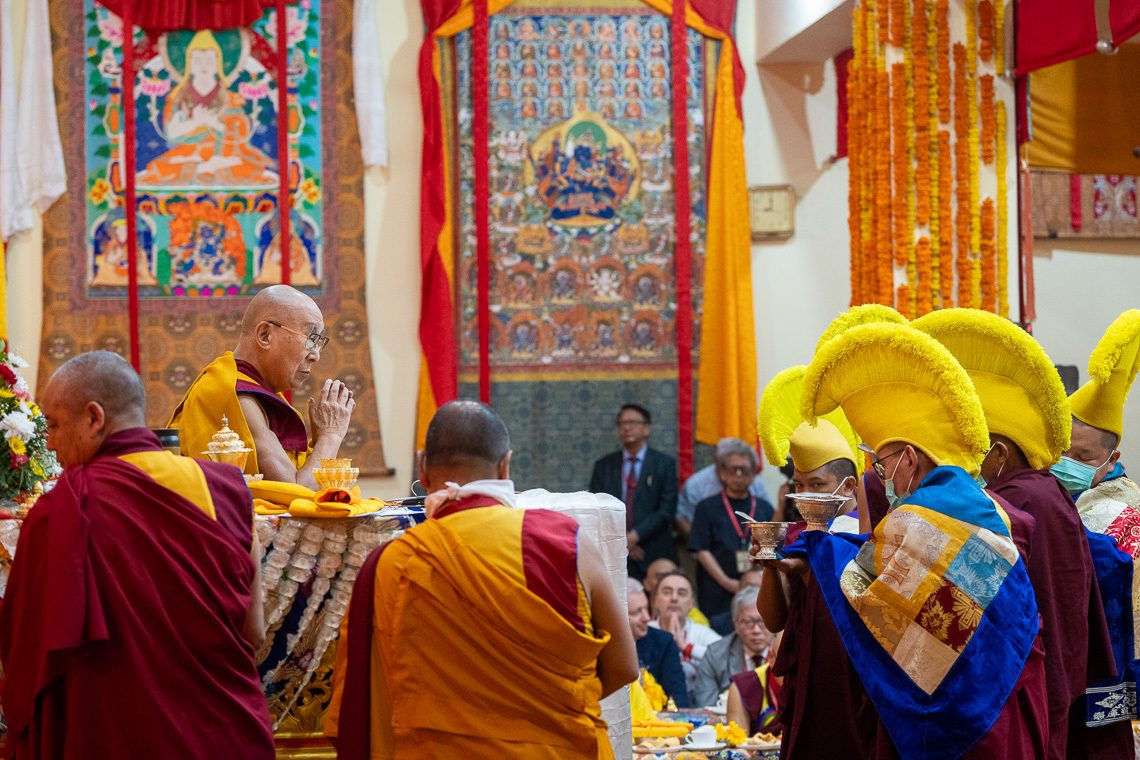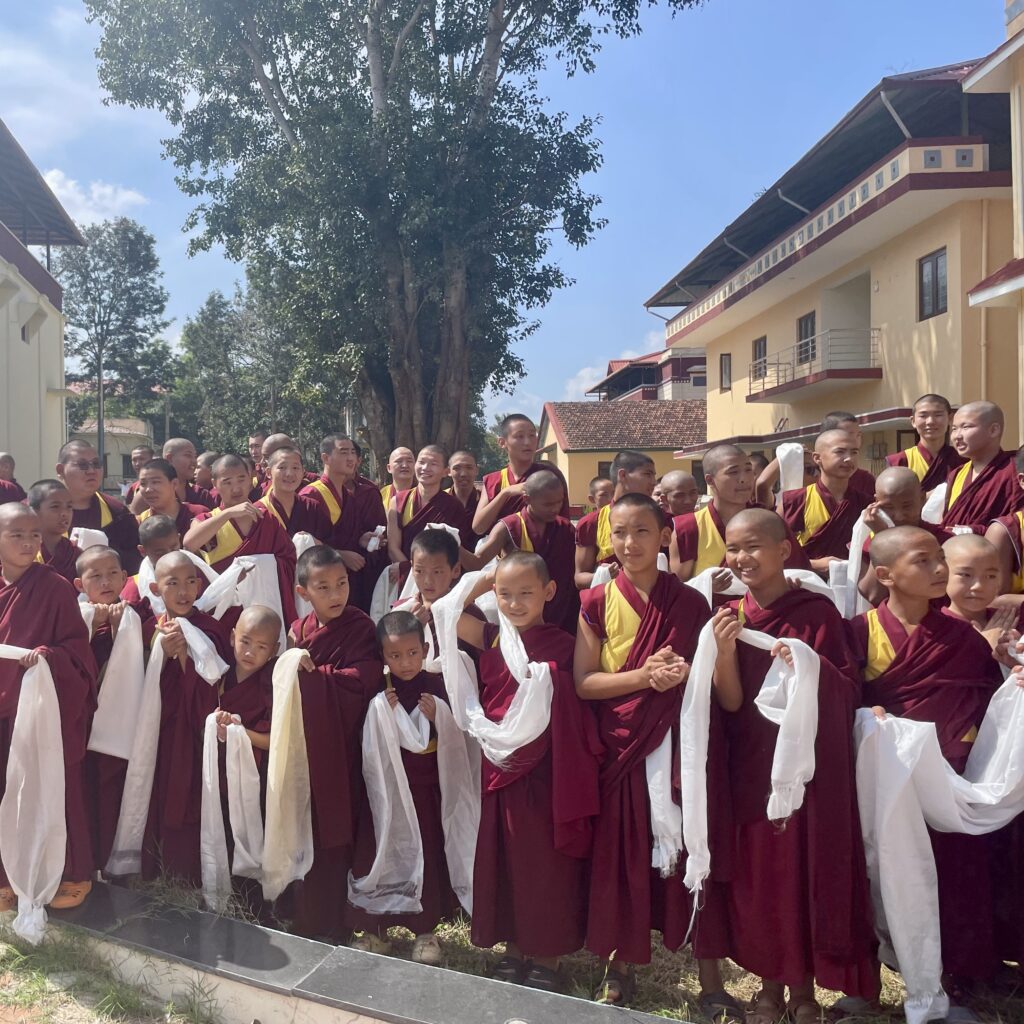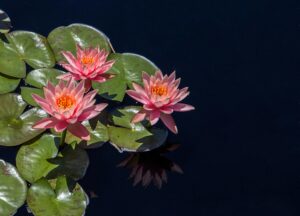At the end of January 2025, I receive a message from Enrica Lobina, the General Director of Wisedāna Foundation: «I need to talk to you, can we arrange a video call this afternoon?» I immediately assume there’s some bad news or an issue to solve: professional bias. When we finally find ourselves face to face through the screen, I see she’s visibly emotional: “I hope you’re sitting down,” she says. But she’s smiling, like someone who’s hiding, in the closed fist behind their back, an incredible surprise for the one about to receive it. «In February we’re going to Bylakuppe, in southern India, for a visit with His Holiness the Dalai Lama. I’d like you to come too». I repeat those words in my mind, as if lights suddenly go off all around me, and the face of Tenzin Gyatso (this is the given name of His Holiness) appears vividly, with sharp features.
It’s as if my mind, in the span of a few seconds, opened all the books I’ve ever read about him, about the Tibetan question, the Tibetan people, the Tibetan mountains. I quickly recall the countless nights and days spent studying the history of Tibet, its philosophy, religion, politics and language. In 2010, I moved to Venice to study Languages, Cultures and Philosophies of India and Tibet. Since then, my interest and passion for the Tibetan cause have grown steadily, leading me to travel through remote regions of China during my master’s thesis in Political Science. The goal was to document and analyze ethnic assimilation attempts against the Tibetan and Uyghur minorities, with a special focus on the Tibet and Xinjiang regions.
It’s clear, then, that the Tibetan cause is truly important to me, and that’s why the news of this journey hits so deeply. Enrica has opened the fist she had hidden behind her back, and the surprise she offers is almost too much. Covering my face with my hands, I simply say: “It would be an honor.” We leave in two weeks.
The Dalai Lama is the highest spiritual authority of Tibetan Buddhism and a globally revered figure for his tireless advocacy not only for the Tibetan people but, virtually, for all living beings. Tenzin Gyatso, the 14th Dalai Lama, was born on July 6, 1935, in the village of Taktser, in Amdo, a northeastern region of Tibet. At the age of two, he was recognized as the reincarnation of his predecessor, the 13th Dalai Lama, and began an intense path of monastic training.
In 1950, at just 15 years old, he had to take political leadership of Tibet during a period of rising tension with the People’s Republic of China, which had begun its occupation. These tensions culminated in March 1959 with a popular uprising in Lhasa, the Tibetan capital, which was brutally suppressed by Chinese military forces. Fearing for his life and wishing to ensure guidance for his people, the Dalai Lama decided to flee into exile. On March 17, 1959, disguised as a soldier, he left Norbulingka Palace and, after a perilous journey across the Himalayas, reached India. The Indian Government wrote some of the most noble and courageous pages of its history by offering political asylum to His Holiness. Since then, he has resided in Dharamsala, in the northern Indian region of Himachal Pradesh, which is home to the Central Tibetan Administration in exile. For over sixty years, Tibetan refugees who continue to flee their homeland have been welcomed here, after making the difficult journey across the Himalayan mountains.
My head spins when I think that I’ll be meeting a figure of this magnitude. Mid-February arrives: we leave.
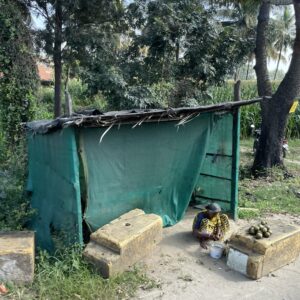
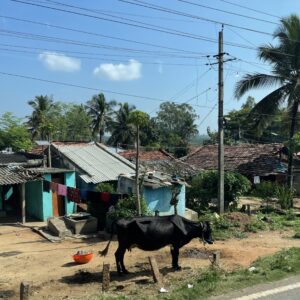
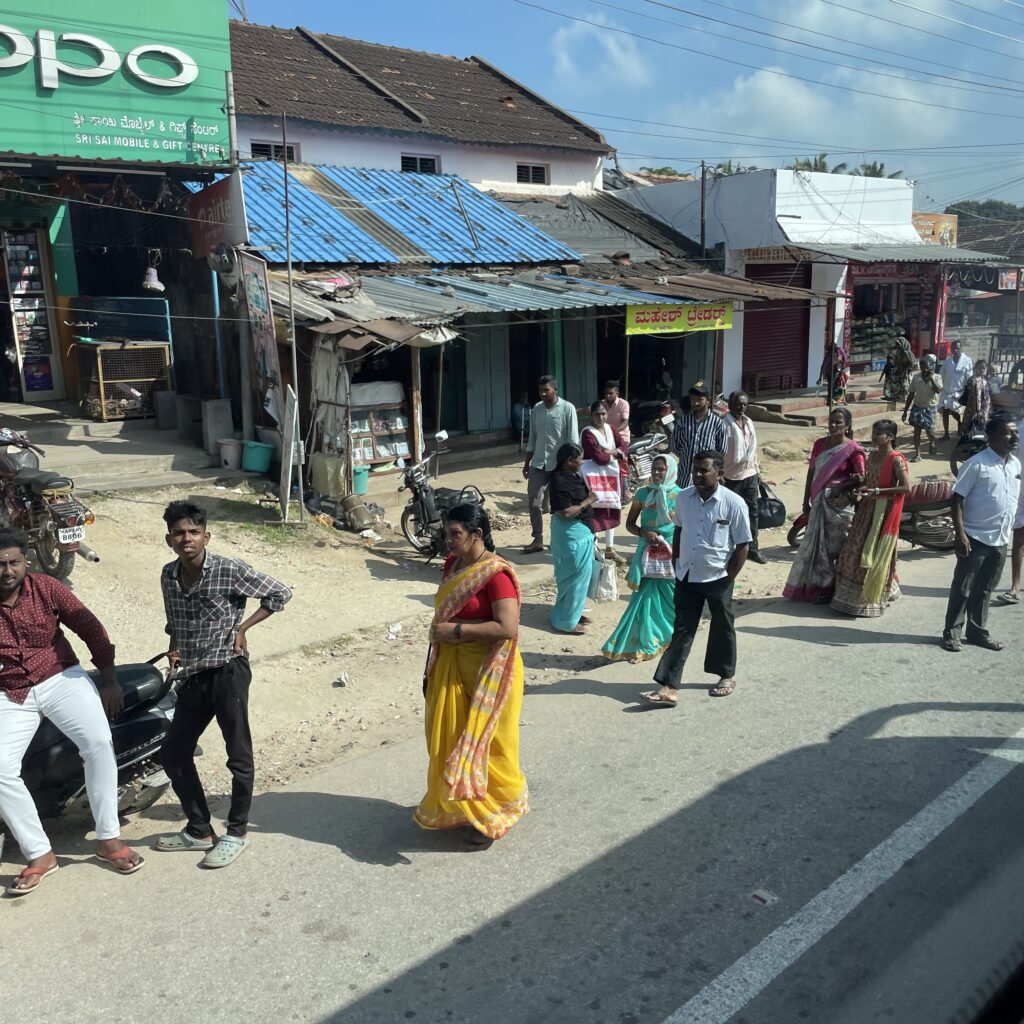
From my travel journal:
We arrive in Bangalore exhausted and with that typical feeling of jet lag that, in India, has its own special version. It’s not just the fatigue from not sleeping, from being on my feet for hours at the airport, or being jostled around in a car along the dirt roads connecting Bangalore to Bylakuppe. It’s also the air itself, warm and filled with identity—not so much a specific smell as a collection of memories. After so many years in India, even this cryptic sensation has become familiar, and between fatigue and strain, we happily surrender to the four-hour drive that will finally bring us to Bylakuppe. The mere thought of what we might find there is enough to quicken both my thoughts and heartbeat. A deep breath.
Bylakuppe, a sweltering town in the Indian state of Karnataka, is home to one of the largest and oldest Tibetan refugee settlements in India. In 1960, the Karnataka government allocated about 3,000 acres of land to house Tibetan refugees fleeing Chinese repression. This initiative led to the creation of the Lugsum Samdupling settlement in 1961, followed by Dickyi Larsoe in 1969. Today, Bylakuppe is home to an estimated 70,000 Tibetans and serves as a vital hub for preserving the culture and religion of these exiled people.
Bylakuppe is India, but it is also Tibet: amid lush vegetation and the sounds of trucks, numerous monasteries rise—spiritual and historical landmarks of resistance. Namdroling Monastery, also known as the Golden Temple of the South, is the largest teaching center of the Nyingma school of Tibetan Buddhism: it houses over 5,000 monks and nuns. Sera Monastery, modeled after the namesake monastic university in Tibet, belongs to the Gelug school and is where philosophy comes alive through study and debate. Other important monasteries include Sakya Monastery and Tashi Lhunpo Monastery, founded in 1972.
We, instead, are headed to Gyudmed.
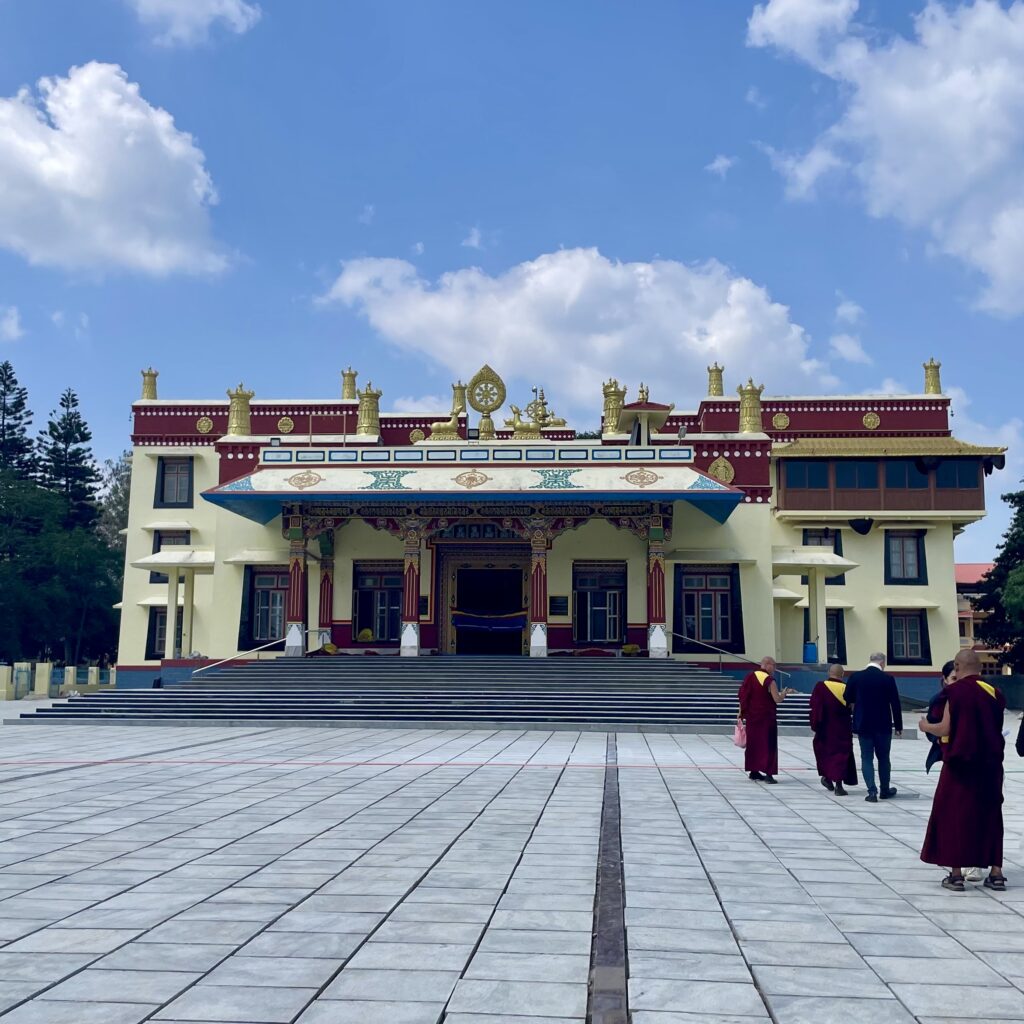
Gyudmed Monastery, located in the Tibetan settlement of Hunsur, near Bylakuppe, is a major monastic institution of the Gelugpa tradition. Founded by monks in exile to preserve the tantric teachings of Tibetan Buddhism, the monastery plays a crucial role in the spiritual and academic training of monks.
From my travel journal:
We arrived at Gyudmed. In the car, Lobsang Phurbu, who is accompanying us, explains that we will be staying in the building where the monks usually go on meditation retreat. As he walks me up the stairs, handing me the key and a classic Indian padlock as heavy as a rock, he smiles: “Until yesterday, someone was meditating in your room. Now it’s full of positive energy.” I feel the privilege and good fortune, and almost wish I could sleep outside that room filled with pure thoughts—I don’t feel worthy. Lobsang opens the door and invites me in. The room is square, with a simple bed on the right, a thin Indian-style mattress beneath a window that opens onto the forest, full of peacocks, monkeys, and they say even elephants, tigers, and bears. On the wall hangs a thangka of Buddha Sakyamuni, a small table, and a meditation cushion. Another door opens onto the balcony, overlooking the vegetation. I can see monks circumambulating the massive structure of Gyudmed. Tears well up in my eyes.
Gyudmed Tantric Monastery: a magical, mysterious place. At first glance, from afar, it might seem like one of the many monasteries born in exile after the Chinese invasion of Tibet. But stepping inside, you immediately sense you’ve entered another universe, where every gesture, word, and sound follows a different rhythm, carved into the stone of time. Gyudmed is the rebirth, on Indian soil, of an institution founded in 1433 in Tibet by Jetsun Sherab Senge, a great disciple of Je Tsongkhapa, the reformer of Tibetan Buddhism and founder of the Gelugpa school. After the original monastery’s destruction, the surviving masters rebuilt not only a physical structure in Hunsur, near Bylakuppe, but an entire spiritual heritage, saving it from oblivion.
Here, the esoteric branch of Buddhism is cultivated and transmitted: Vajrayāna, taught only to those with adequate philosophical and inner preparation. The monastery houses hundreds of monks whose activities go far beyond the study and recitation of sutras: every day they engage in rigorous mental and ritual training that includes complex visualizations, mandala creation, subtle body meditations, and powerful recitations charged with deep vibrational energy.
The core of their study is the Guhyasamaja Tantra, one of the deepest and most sophisticated texts of the tantric tradition. In the Gelugpa school, it is considered the foundation for understanding the path to Enlightenment through the transformation of ordinary experience. In addition to this, monks study other foundational texts, as well as logic and dialectics, Madhyamaka philosophy, mind and cognition. Intellectual rigor is matched by meditative commitment: mind is not separated from heart, nor reasoning from devotion.
All around, the monastery pulses with activity: young novices learn classical Tibetan, others translate texts into English, some monks devote themselves to the art of sand mandalas, while others train in the perfect recitation of ritual texts. Their voices seem to rise from the depths of the Earth and calm every thought within us, visitors locked out of this mystery. Nothing is left to improvisation. Every ceremony, study session, and meditation is part of an unbroken chain of spiritual transmission, reaching from premodern Tibet to the present day. Gyudmed could be one of Calvino’s Invisible Cities, built around an ancient knowledge that cannot be fully explained in words—you have to enter it, stay in it, listen. It is one of the few remaining places where the shape of knowledge does not separate mind from reality, and where the path to Enlightenment is walked step by step, in the silence of a monastery in exile that has become home.
I think about all this during the few days separating our arrival from the meeting with His Holiness. Hours pass slowly, paced by computer work we cannot put aside, and by the rhythm of the monks’ prayers. There is a surprising stillness, even though we know inside that we are approaching the most important moment of our journey. Still, the atmosphere is electric: everyone is excited, us included, and there’s a solemn air. The meeting with the Dalai Lama is now near—just one day left—and I still struggle to believe that life has truly gifted me this experience.
…
The continuation of Beatrice’s account was published in May 2025: you can read it HERE
Photo credits: The Office of His Holiness the Dalai Lama
Text by Beatrice Marzi
Editedt by Marta Turchetta
